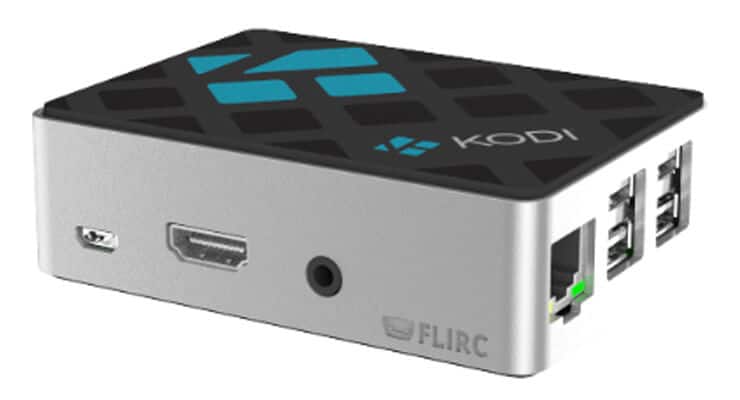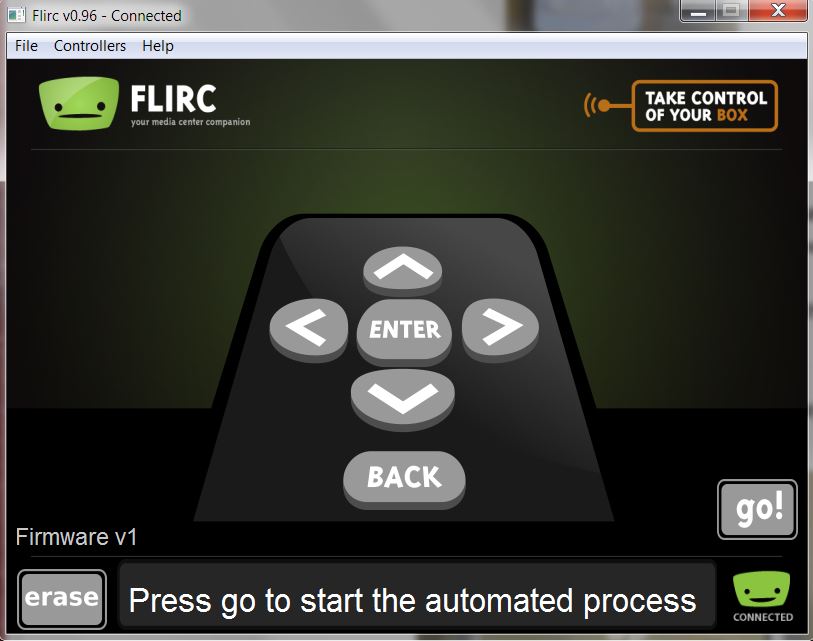
Simply remove the seal from the adhesive pad that is found at the bottom of the sink. Luckily, placing smaller heatsinks onto a Raspberry Pi 3 is incredibly easy. Thus, you will want to ensure that your heat sink is as close to the two components as possible. Thermal imaging shows that the areas of the Raspberry Pi 3 that generate the most heat are the CPU and LAN chips.
FLIRC RASPBERRY PI OPENELEC INSTALL
How Do You Install A Heatsink To A Raspberry Pi 3? These are often very affordable and very simple and don’t take up too much space, so your Pi can continue to be compact and entirely portable. There are also numerous fans that can be hooked right up to the motherboard to provide endless cooling for the entire board. The great thing about this is it is able to cool the Pi down entirely silently, without any need for a fan. One of the best cases for the Raspberry Pi 3 is definitely the Flirc Raspberry Pi 3 case, which features solid aluminum construction, and also features a thermal pad, which actively absorbs any heat that is produced by the motherboard. One of the best ways you can keep your Raspberry Pi 3 cool is by placing it into an appropriate casing. Are There Any Other Cooling Options For A Raspberry Pi 3? If you were to attempt to overclock your Raspberry Pi 3 computer, then it may be necessary to have a heatsink installed, to help to keep it cool. Thus, it is quite risky, and you run the risk of overheating the motherboard to a dangerous point beyond repair! Overclocking refers to the act of forcing a computer to exceed its usual clocking speed so that it can achieve greater processing power, at the cost of producing more heat.īy overclocking a Raspberry Pi 3, you will be effectively bypassing the CPU’s attempts to throttle the clocking speed to keep your Pi cool. Now, while you may not need a heatsink at all when operating your Raspberry Pi 3 normally, you most likely may need one should you choose to overclock it. Does The Raspberry Pi 3 Need A Heatsink If You Are Overclocking It? Thus, there isn’t actually much of a need for a heatsink, as the pi 3 will actively seek to prevent any overheating in the first place.

The clocking speed of the Pi 3 is throttled so that it never rises above a general average of 1.4 GHz.Īs soon as the CPU detects that the clocking speed is being increased, and thus the temperature, it actively seeks to throttle the clocking speed, to keep the motherboard from heating up. Many recommend placing your Pi 3 into a vertical position during use, so that the airflow to the board is more improved, which can help to keep it cool.Īs well as the exposed design of the Raspberry Pi 3 helping to keep it cool, the actual internal CPU of the computer actively helps to keep it cool. This makes it much easier for it to cool down. First, the Pi 3, in its original form, has no outer shell, so the motherboard is completely exposed. Luckily, the Raspberry Pi 3 is perfectly constructed so that it does not require the installation of a heatsink.

The medium absorbs all of the heat from the board so that the heat can naturally dissipate and return the motherboard back to its ordinary temperature. This separate medium is usually air or liquid. If you’ve got questions like this spinning around your head, don’t worry, we’re here to settle them once and for all! Read on below to find out whether your Pi 3 needs a heatsink! What Is A Heatsink?Ī heat sink is a form of cooling designed for computers that transfers all of the heat that is generated by a motherboard into a separate medium. So, is it best to install a heatsink to a Raspberry Pi 3? How would you do it if you had to? Are there any other ways to cool down the Raspberry Pi 3? This is especially risky, as Pi computers do not have onboard cooling. However, as with any computer, overloading a Pi with too much information to process can lead to overheating.
FLIRC RASPBERRY PI OPENELEC HOW TO
Their simple but precise construction makes it easy to learn a lot about building computers, while the Raspbian OS makes it easy to learn how to code and program like a master.

There’s a reason these computers have proven so popular not only as mini personal computers but also as amazing educational tools.


 0 kommentar(er)
0 kommentar(er)
